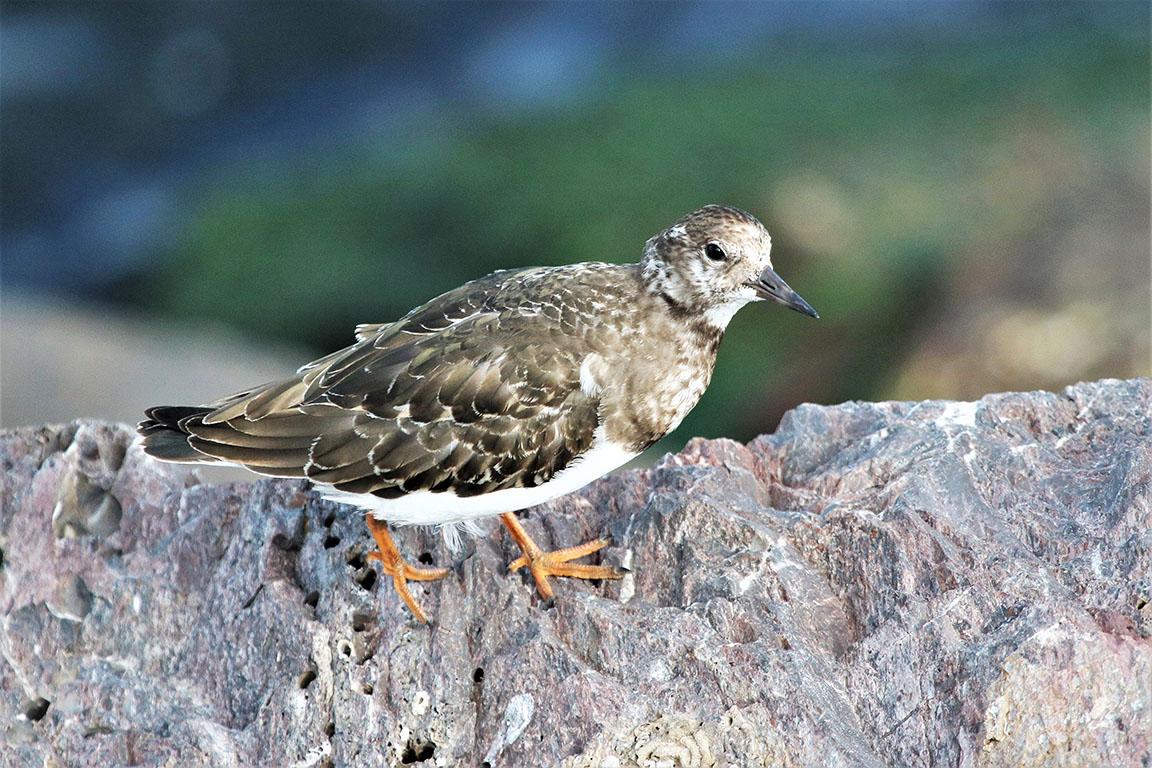Ruddy Turnstone

Brixham Breakwater, UK
The common and widespread ruddy turnstone is a small, stocky wader and a member of the sandpiper family. It breeds in in northern Eurasia and North America and migrates south to winter to coastlines in many parts of the world. The turnstone in the picture above is seen in non-breeding plumage.
Habitat
The ruddy turnstone nests on open tundra often close to water, usually the sea. During the winter it prefers rocky or stony shores, grassy coastal areas, inland wetlands or artificial structures such as jetties and breakwaters (where the bird above was photographed).
Feeding
The ruddy turnstone is an omnivore and will eat eggs, fish, carrion and plant material. However, its main source of nourishment are insects and their larvae and, invertebrates, crustaceans. molluscs and worms. It has a variety of feeding methods including pecking and probing but is named after its commonly used method of flipping over stones to get at the prey beneath.
Breeding
Monogamy amongst ruddy turnstones may extend beyond one breeding season. The female chooses the nest site and constucts a nest that consists of a shallow scrape lined with plant material on open stony ground or hidden in vegetation but usually close to water. Turnstones often nest in small colonies. Two to five pale green-brown eggs with dark brown markings are incubated mainly by the female with male participation in the later stages. Both parents feed the precocial chicks.
Wildfile Specials
- Ruddy turnstone plumage shows unusual variation. Plumage patterns are often unique to an individual bird and help them to recognise each other and drive away intruders.
- Ruddy turnstones return to the same wintering ground year after year.
- Ruddy turnstones have a longer life than most other waders with an average lifespan of nine years. Annual adult mortality rates are under 15%. The longest recorded lifespan is over 19 years.